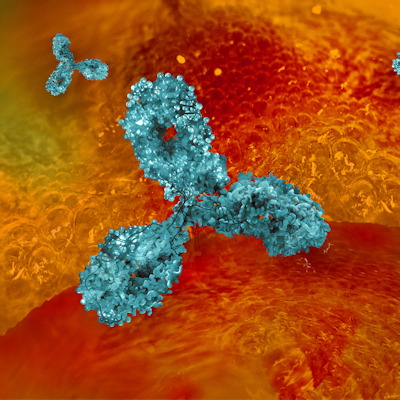September 1, 2020 -- Researchers have developed a new class of small-molecule drugs that show promise against a subset of pediatric leukemia with the NUP98-NSD1 chromosomal translocation. The findings were published in Nature Chemical Biology on August 31.
The nuclear receptor-binding SET domain (NSD) family of histone methyltransferases is comprised of three members -- NSD1, NSD2 and NSD3 -- which regulate chromatin integrity and gene expression. Overexpression, mutations, and translocations of NSDs are associated with several human malignancies, including NSD1 translocation with the nucleoporin 98 and 96 precursor (NUP98) gene, which predominantly occurs in pediatric patients with acute leukemia.
The oncogenic activity depends on the catalytic activity of conserved SET domains within histone methyltransferase. The SET domain has an autoinhibitory loop that blocks access to the substrate-binding site.
For their roles in many cancers, NSDs have emerged as attractive targets for the development of small-molecule inhibitors. However, efforts to develop inhibitors of these enzymes have not been successful.
In the new study, researchers from the University of Michigan Rogel Cancer Center used a fragment screening strategy to identify a small molecule that binds to the NSD SET domain. Then, using chemical optimization, they developed covalent inhibitors of NSD1 that block its activity in cells and demonstrate selective growth inhibition of NUP98-NSD1 leukemia cells.
The team began by determining the crystal structure of the NSD1 SET domain with a covalently bound ligand, which revealed a conformational change in the autoinhibitory loop leading to the formation of a unique, channel-like site suitable for small-molecule binding. Next, they developed several reversible ligands that bind to NSD1 and interact strongly with the SET domain. These interactions include four hydrogen bonds and two chalcogen bonds which could be targeted with further modifications.
The lead inhibitor compound (6‐chloro‐1,3‐benzothiazol‐2‐amine analog 5; BT5) targets C2062 in the autoinhibitory site. An aziridine moiety (cysteine-reactive) acts as a warhead targeting the covalent bond of cysteine in a buried hydrophobic site.
NUP98-NSD1-transformed cells treated with BT5 had inhibited growth and downregulation of oncogenic genes. These studies showed the on-target effects of BT5, which only inhibited growth of the patient sample with acute myeloid leukemia but not a patient sample with mixed lineage leukemia eleven-nineteen leukemia translocation.
The scientists noted that further optimization is needed to develop NSD1 chemical probes and drug-like analogs of BT5, but the lead compound offers a proof of concept that targeting SET domains of NSD proteins with small molecules is possible.
"Our study ... demonstrates that targeting this key enzyme with small-molecule inhibitors is a feasible approach," said Tomasz Cierpicki, PhD, an associate professor of biophysics and pathology at University of Michigan. "These findings will facilitate the development of the next generation of potent and selective inhibitors of these enzymes, which are overexpressed, mutated or undergo translocations in several types of cancer."
Do you have a unique perspective on your research related to rationale drug design or cancer research? Contact the editor today to learn more.
Copyright © 2020 scienceboard.net







